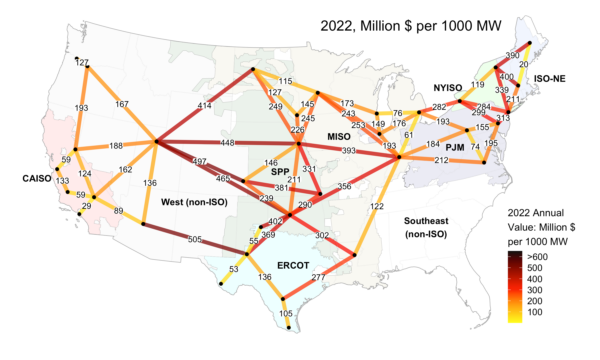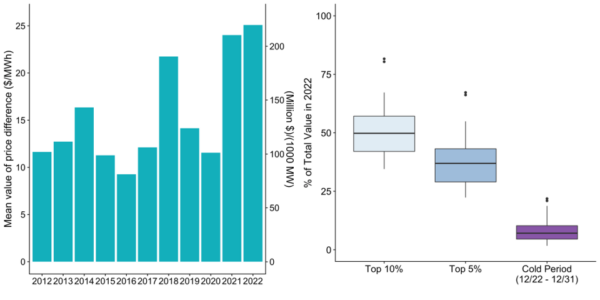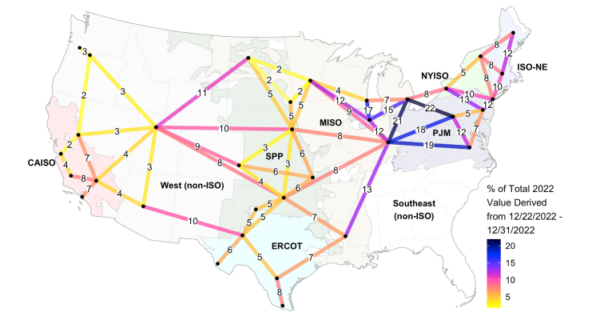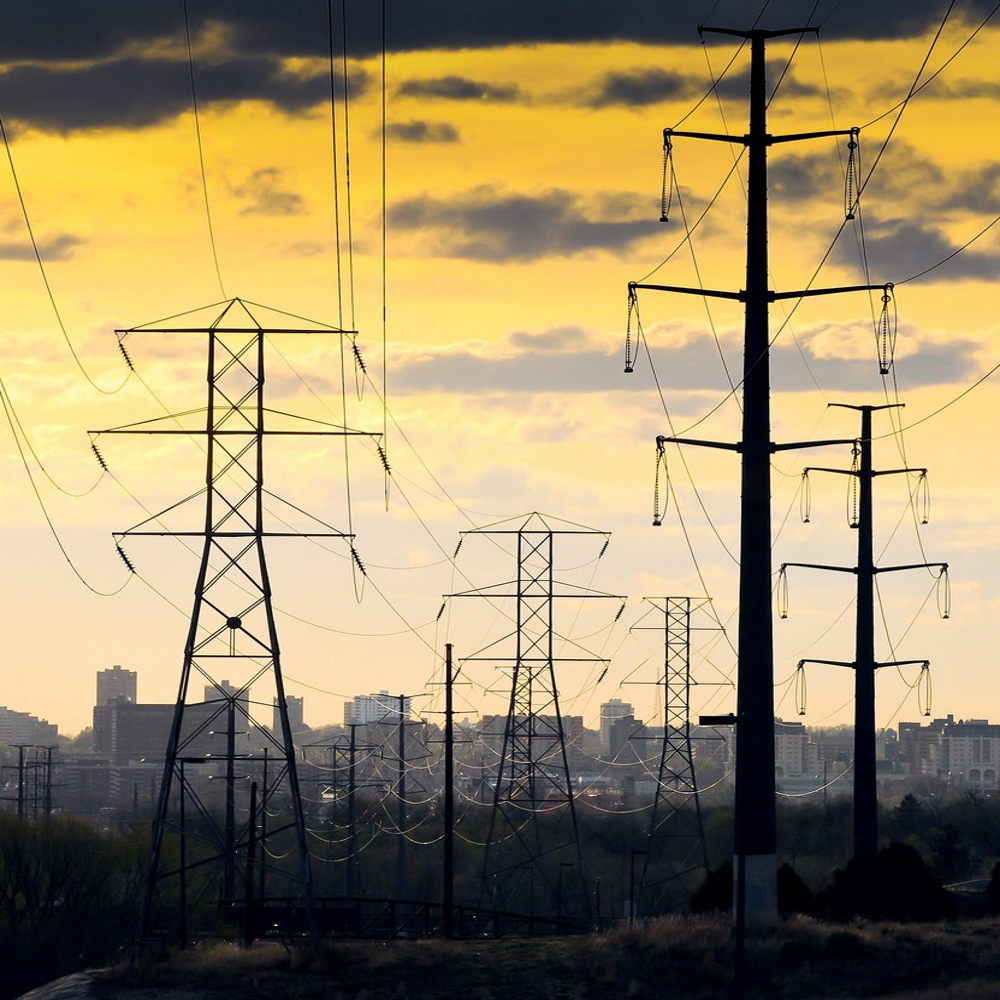A recent study from the Lawrence Berkeley National Laboratory found significant potential savings from congestion relief new transmission infrastructure.
Across the United States, high transmission values were observed in 2022. The map below shows the value of a hypothetical 1000 MW transmission link based on hourly energy price arbitrage.

By looking at the difference in wholesale electricity prices between two locations, it is possible to estimate the cost of congestion, and the potential value for new transmission that would resolve this.
While it is challenging to assess the full benefits of new grid infrastructure, the stark interregional differences underscore the need for new transmission amidst a year defined by uncertainties in severe weather, and wholesale electricity price volatility.

The left graph above shows transmission values reached a peak in 2022 compared to the past decade. Based on the set of 64 interconnection links the mean value was $220 million per 1000 MW, or $25 per MWH. At the same time, this transmission value is increasingly concentrated into a smaller fraction of total hours.
As seen in the right graph above, 50% of total value was derived from only the top 10% of hours, and 37% of total value was derived from only 5% of the hours. In comparison, the typical link derived 50% of value from only 5% of hours from 2012 to 2021. This is consistent with the higher wholesale electricity prices leading to higher values across all hours. As well, the typical link derived 7% of its annual value from Dec. 22 to Dec. 31 when winter storm Elliot gripped most of the country with record cold temperatures.

As seen above, winter storm Elliot caused this transmission value to expand east with the cold temperatures. In MISO, PJM, and the Northeast the storm resulted in these interconnection links providing 10% to 22% of total annual value in under two weeks. As climate change continues to exacerbate the frequency and severity of these severe weather events, the potential savings from increased transmission will only expand.
It should be noted that this study does not include additional benefits of reliability, resiliency, and reduced emissions. Achieving net zero emissions will require electricity from renewables to be moved from where it is generated to where it is used. This requires an unprecedented expansion of infrastructure across the country. For example, every net zero scenario in Princeton University’s Net Zero America project in 2021 estimated anywhere from two to five times current transmission. With that in mind, existing transmission planning approaches need to stop understating the rising economic value of new infrastructure, and the rising cost of uncertainty driven by weather.
This content is protected by copyright and may not be reused. If you want to cooperate with us and would like to reuse some of our content, please contact: editors@pv-magazine.com.








The sunny southwest, including California is three hours behind the east coast meaning in the summer, when the sun is no longer shining brightly at the 5:00 PM to 7:00 PM peak usage hours on the east coast, the west coast is experiencing peak solar production between 2:00 PM and 4:00 PM in the afternoon and because of daylight savings time, the suns position is actually 1:00 PM to 3:00 PM, the most productive hours for solar generating energy that is often curtailed by utilities on the west coast. This is one of the good reasons to allow daylight savings time all year long for the lowest cost energy to be produced in the sunny southwest and complete the cross-country crossover of electrons on a connected grid. The west also has mountains with reservoirs that can hold far more water than is currently being stored there and if pumped hydro was used, to store the excess energy, currently curtailed by utilities on the west coast, as kinetic energy and released during the west coast peak hour of 5:00 PM to 7:00 PM, the full utilization of solar and wind would lower the costs of electrical power nationwide without building a lot of batteries.
If only commercial corporate utility scale energy development parameters are used for predicting about collection, generation, transmission, storage and distribution of solar energy, then I guess that explains descriptions of “savings”.